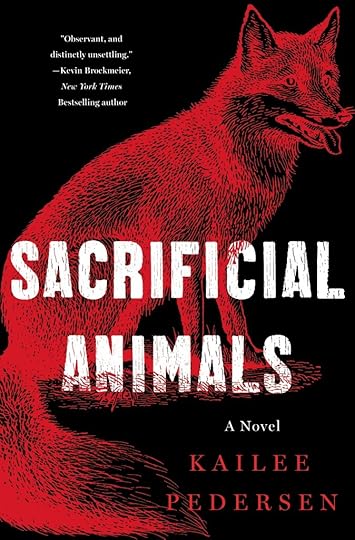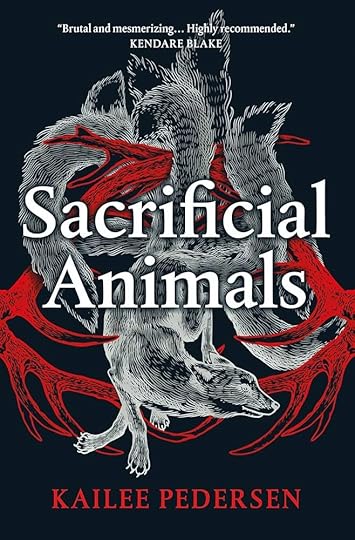Discovering the Horror Within: How “Sacrificial Animals” Explores the Collapse of a Family
In the chilling landscape of supernatural horror, “Sacrificial Animals” by Kailee Pedersen stands out as a haunting exploration of ancient Chinese mythology intertwined with the eerie collapse of a family.
Inspired by Pedersen’s personal journey from Nanning, China to a farm in Nebraska, this atmospheric debut delves into the legacy of inherited trauma that shadows the Morrow family. As protagonist Nick Morrow returns to his childhood home, summoned by his estranged father’s mysterious deathbed request, he is thrust back into a world of old wounds and new threats.
With the spectral past creeping into the present, Nick must navigate unsettling family dynamics and a burgeoning romance with his brother’s wife, Emilia, whose enigmatic allure hints at sinister, possibly mythological depths. Dive into this gripping tale where every page teeters on the edge of suspense and curiosity, promising a narrative rich with queer awakening and the spectral echoes of a family’s darkest secrets. Find the book on Amazon.
 A Journey from Nanning to Nebraska
A Journey from Nanning to NebraskaThe novel’s setting transitions from the bustling city of Nanning, China, to the vast, open landscapes of Nebraska. This shift reflects a journey not just of physical distance but of cultural and personal transformation. Nick Morrow, adopted from China, navigates these disparate worlds while uncovering layers of his identity.
The rural Nebraska farm, steeped in memories and mystery, contrasts sharply with Nick’s beginnings in Nanning. This setting amplifies the novel’s tension, serving as a witness to the Morrow family’s unraveling. As Nick returns, the farm becomes a stage where past grievances resurface.
Through Nick’s journey, the narrative explores the intersection of personal history and environment. This exploration invites readers to consider how geographic and cultural shifts influence identity and family relationships.
The Shadow of Inherited TraumaInherited trauma forms a chilling core in “Sacrificial Animals,” influencing characters across generations. Trauma, passed down like a family heirloom, manifests in both overt and subtle ways, shaping the Morrow family’s interactions and individual psyches.
In literature, inherited trauma often disrupts the present, as seen with Nick’s return to his childhood home. Old wounds and grievances resurface, illustrating how unresolved pasts can haunt present relationships. This narrative thread draws readers into a cycle where the past is never truly past.
The novel’s portrayal of trauma is nuanced, encouraging empathy and understanding of its lingering effects. The Morrow family becomes a case study, exemplifying how familial trauma can weave itself into the fabric of daily life, affecting decisions and relationships.
 The Supernatural Horror Elements
The Supernatural Horror ElementsSupernatural horror is skillfully woven into the novel through mythological references and eerie events. These elements elevate the tension, creating a haunting atmosphere that lingers throughout the story. The supernatural acts as both a literal and figurative specter within the Morrow family’s life.
Mythological creatures and ancient legends permeate the narrative, adding a layer of mystery and suspense.Unexplained events on the farm challenge the characters’ understanding of reality, blurring the lines between myth and truth.Symbolic representations of these myths suggest deeper meanings tied to the family’s struggles and secrets.These elements invite readers to question the nature of reality and the power of ancient traditions in shaping modern lives. By intertwining horror with mythology, the novel crafts a narrative that is both engaging and thought-provoking.
The Sinister Motivations of EmiliaEmilia, Nick’s brother’s wife, is a character shrouded in mystery and complexity. Her motivations appear intertwined with the novel’s supernatural aspects, hinting at something sinister beneath her enigmatic exterior. Her relationship with Nick evolves in unexpected ways, adding layers to the narrative.
The novel uses Emilia’s character to explore themes of temptation and deception. Her presence introduces tension, as her true intentions remain ambiguous. Is she an ally or an antagonist? This uncertainty keeps readers on edge.
Emilia’s character challenges traditional roles, bringing a modern twist to mythological archetypes. Her motivations, possibly influenced by ancient myths, suggest a deeper connection to the supernatural elements of the story. This complexity makes her a compelling figure within the novel’s landscape.
 Nick’s Adolescent Memories
Nick’s Adolescent MemoriesNick’s adolescent memories are pivotal in understanding his character development. These memories, punctuated by moments of self-discovery and queer awakening, reveal the internal struggles he faces. Nick’s past becomes a lens through which readers view his present actions and motivations.
During his formative years, Nick experiences a series of events that shape his understanding of himself and his identity. These memories, often tinged with confusion and curiosity, provide insight into his character’s evolution.
Moments of realization occur against the backdrop of the farm, intertwining personal growth with the physical setting.Encounters with others during his youth highlight societal attitudes and personal conflicts related to his identity.Reflective passages in the novel allow readers to engage with Nick’s internal journey, fostering empathy and connection.The Collapse of Family BondsThe collapse of family bonds is a central theme, demonstrating how secrets and trauma can erode relationships. In “Sacrificial Animals,” these bonds are tested, leading to moments of confrontation and revelation. The Morrow family’s breakdown is both gradual and inevitable, reflecting larger themes of disintegration and renewal.
As the story unfolds, the family’s fragile connections begin to unravel, revealing long-buried secrets. The novel uses this collapse to explore how misunderstandings and hidden truths can fester over time.
Tensions rise as characters confront their past and present, leading to pivotal moments of truth.Family dynamics shift as new alliances form and old ones dissolve, altering the familial landscape.Resolution and reconciliation become uncertain goals, prompting readers to ponder the possibility of healing and forgiveness.The novel’s exploration of these themes invites readers to reflect on their own familial relationships and the impact of history on the present.



